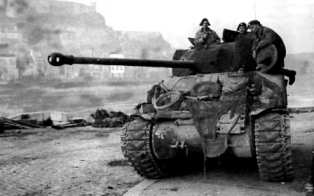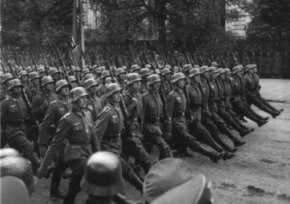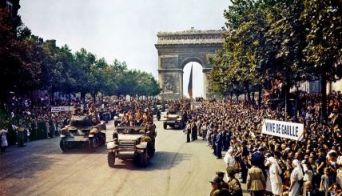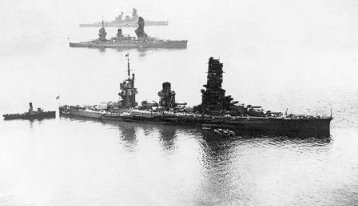Welcome students;
Learning objectives;
1. I will find out more facts why the world war 2 started.
2. I will understand why the war was slip between Axis and Allied
World War II
The War in Europe and the Pacific
World War II in Europe began when Hitler's Nazi Germany attacked Poland. Germany had allies such as Italy, Hungary, Bulgaria, and Romania. These European countries were part of the Axis Powers.
The countries that fought against Germany and the Axis Powers in Europe were called the Allied Powers.
The main Allied Powers in Europe were Great Britain, the Soviet Union, and France. Later the United States would help in defeating Hitler.

British Tank fighting in Europe
Source: U.S. Army Center of Military History
Source: U.S. Army Center of Military History
Leading up to War
- When Germany lost World War I they were forced to sign the Treaty of Versailles.
- This treaty not only took land from Germany, but required that they pay huge amounts of money in reparations to countries they had fought.
- As a result, the German economy did very poorly.
- The citizens of Germany were not only humiliated that they had lost World War I, but they were also poor and struggling.
- It was during this time that Adolf Hitler and the Nazi Party came into power. Hitler promised he would bring Germany back to power.
- Hitler was elected Chancellor of Germany in 1933. Soon he had made himself dictator.
- Hitler said the country needed more land or "living space". First Hitler took over the country of Austria. Next, he took part of Czechoslovakia.
- The other European countries didn't want war, so they didn't do anything.
- Finally, when Germany invaded Poland in 1939, the other countries knew he would not stop. France and Great Britain declared war on Germany and World War II had begun.

German Troops Invade Poland
Source: National Archives
Source: National Archives
The War
- It was in April of 1940 when Germany went on the attack again. On April 9, 1940 Germany invaded Norway and Denmark.
- Soon after that, they invaded the Netherlands, Belgium, and France.
- On June 22, 1940 Germany signed an agreement that gave them control of the Northern half of France.
- Up until this point in the war, the Soviet Union (Russia) had been allied with Germany. However, on June 22, 1941 Germany invaded the Soviet Union. Now the Soviet Union was on the side of the Allies.
The United States Enters the War
- The United States had stayed neutral during the war. They tried to help out the Allies, but did not want to enter the fighting.
- However, on December 7, 1941 Japan attacked the US at Pearl Harbor ( US Navy base). The war in the Pacific in Hawaii.
- The US became a major power within the Allies Alliance.
Three Fronts
By 1941 Germany had control over much of mainland Europe. They had tried to take over Great Britain in 1940 with the Battle of Britain, but failed. Germany's army was stretched thin and was fighting on three fronts:
- Eastern or Russian Front
- Mediterranean Front and Africa
- Western Front (France and Great Britain)

Celebration when Paris was liberated from Germany
Photo by Jack Downey
Photo by Jack Downey
The Allies Start to Fight Back
In 1942 and 1943 the Allies began to fight back. The British Air Force began to bomb Germany, taking the war to German soil. The Allies also took control of northern Africa and then launched an attack on Italy forcing southern Italy to surrender. At the same time, the Russians defeated the German army on the Eastern Front and started to push them back towards Germany.
End of World War II in Europe
On June 6, 1944 the Allies attacked the Germans on the Western Front. This day is often called D-Day or the Invasion of Normandy. The Allies defeated the Germans and pushed them out of France. Germany then counterattacked and a great battle, called the Battle of the Bulge, was fought. Hundreds of thousands of US troops held the Germans back and the German army was finally defeated.
On May 7, 1945 Germany surrendered to the Western Allies. The next day the Allies celebrated victory. May 8th is called V-E day or "Victory in Europe" day.
The War in the Pacific
The Pacific theater of war included Japan, China, Korea, the Philippines, and many more islands and countries in Southeast Asia.

Japanese Battleships - Japan had a powerful navy
Photo by Unknown
Photo by Unknown
Leading up to the War
- Japan wanted to become a strong country and a world leader.
- However, because Japan was a small island country, they had to import many natural resources.
- Some Japanese leaders felt they needed to gain more land by conquering other countries.
- In 1937 Japan invaded China. They wanted to dominate all of Southeast Asia.
- They joined the Axis alliance with Germany and Italy in 1940 by signing the Tripartite Pact.
- In 1941 a former General of the Army, Hideki Tojo, became Prime Minister of Japan.
- He had been a strong supporter of Japan joining the Axis Powers. Now that he was Prime Minister, Tojo wanted Japan to attack the United States.
Pearl Harbor
- Although the US was trying to avoid getting involved in World War II,
- Japan was worried that the US would try and stop them from taking over some countries in Southeast Asia.
- They decided to attack the US Navy hoping they could sink enough ships to keep the US from ever attacking Japan.
- On December 7, 1941 Japan attacked the US Navy at Pearl Harbor in Hawaii.
- They surprised the US and sunk many ships.
- However, this attack did not have the effect the Japanese had hoped.
- The US joined the Allies in World War II the next day.
- The attack at Pearl Harbor united the Americans with the goal of defeating the Axis powers, and especially Japan.
The War
- The Japanese quickly took over much of Southeast Asia and were well on their way to dominance by 1942.
- Badly outnumbered, the US Navy sunk four Japanese aircraft carriers and forced the Japanese to retreat.
- Winning this battle gave the Americans cause for hope and was a turning point in the war in the Pacific.
- After the Battle of Midway the United States began to fight back against the Japanese.
- They fought to take over strategic islands in the Pacific.
- One of the first major battles was over the island of Guadalcanal.
- After fierce fighting the US was able to take the island, but they learned that fighting the Japanese was not going to be easy.
- There were many battles over islands in the South Pacific, these included Tarawa, Saipan, and Iwo Jima. Iwo Jima took 36 days of fighting to take the island.
- Today a statue of marines raising a flag on the island of Iwo Jima serves as the Marine Corps Memorial in Washington DC.
The Atomic Bomb
Finally in 1945 the Japanese army had been pushed back to Japan. However, the Japanese would not surrender. American leaders felt that the only way to get Japan to surrender would be to invade the main island of Japan. However, they feared this would cost the lives of up to 1 million US soldiers.
Instead of invading, President Harry S. Truman decided to use a new weapon called the atomic bomb. The first atomic bomb was dropped on Hiroshima, Japan on August 6, 1945. It completely destroyed the city and killed thousands and thousands of people. Japan did not surrender.
Another atomic bomb was dropped on Nagasaki, Japan. This time the Japanese decided to surrender.
No comments:
Post a Comment